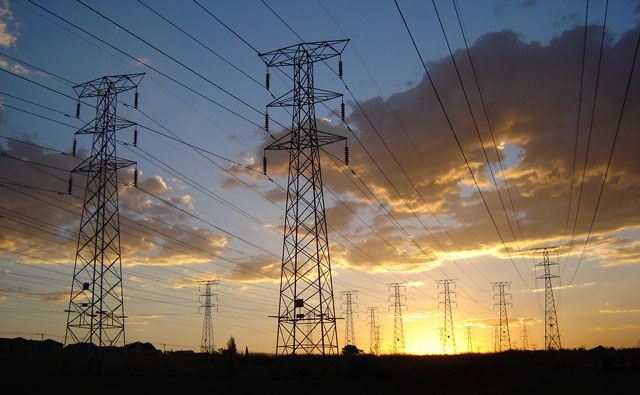
South Africans rejoiced when the National Energy Regulator of South Africa (Nersa) awarded Eskom just half the tariff increase it had applied for in February this year.
But in the power utility’s annual report released on 10 July, Eskom said it would respond to its funding problem by holding off on all new projects, prompting questions about how South Africa will secure its future power needs and who will provide them.
A point emphasised by Eskom was the multiyear price determination decided by the regulator to grant the utility an 8% annual increase instead of the 16% it applied for.
In its report, Eskom said the regulator’s decision would result in a revenue shortfall of R225bn over the next five years.
“That will entail a fundamental change in how we think and what we do,” said CEO Brian Dames. He also said that efficiencies alone would not be enough and other implications were being considered. “We are not doing any new projects; we simply don’t have the funds,” he said.
According to the government’s integrated resource plan (IRP) for 2010-2030, new sources would be needed within 10 years, including 9,6GW of nuclear energy.
The department of energy is currently rewriting the plan, which will have an impact on the timeline for nuclear units. “They need to have made a decision already to catch that 2023 timeline,” Dames said.
He said Eskom firmly believed the country would have to invest in energy but the utility would not extend itself beyond what it was allowed to do without clear agreement that the costs would be covered.
Mayihlome Tshwete, spokesman for the minister of public enterprises, said Eskom had told the department that it felt restricted by the tariff determination.
However, he said, changing Eskom’s mandate was not up to the utility, or even the department of public enterprises, but rather the department of energy.
“We have been having discussions [with the department] about how to sustain the company but, before a mandate is changed, a series of things have to happen.”
Nuclear energy
But, in reply to the Mail & Guardian’s questions, the department of energy said the IRP 2010-2030 remained the government’s 20-year plan for electricity provision, and outlined the new building programme from 2013 onwards.
As far as nuclear energy was concerned, Eskom would lead the way.
“Going forward, Eskom remains the designated owner/operator and preparations are under way to define the nuclear procurement programme,” the department said.
“Eskom is still required to undertake new projects in order to improve efficiency in the operation of their 44GW portfolio of existing power plants, increase their transmission infrastructure to evacuate more power from new stations and to improve the reliability of the grid. This has been provided for by the regulator in the tariff determination.”
But the clock is ticking.
“For a new nuclear plant, if we placed the order today, it would take 15 years,” said Doug Kuni, managing director of the South African Independent Power Producers’ Association.
In general, nothing is done until something fails, he said, and even then things had been slow to move. “The power went out in 2007 and, five years down the line, still nothing has happened.”
Mike Rossouw, chairman of the Energy Intensive User Group, said electricity demand was being suppressed by lack of capacity and, subsequently, the requirement for nuclear energy had changed — if indeed it was needed.
“It is not as urgent as the IRP previously stated. There is time to make a decision.”
In any case, he said, the IRP 2010 is being updated.
Meanwhile, there can be no growth in the economy until there is more power and Tshwete said the government is aware that time is of the essence when it comes to securing future energy supplies.
“We have been assured those discussions about new entrants into the energy space have been taken to the highest level,” he said.
Since the adoption of the IRP in December 2012, the minister of energy has determined that increased generation will depend on several technologies, including coal, hydro, gas, co-generation and renewables.
And, as such, all plans for new capacity after Kusile, including Eskom’s plans, must be aligned with the IRP.
Besides the determination already made, procurement programmes for other technologies are already in process.
“In fact coal, co-generation, gas and hydro programmes will have reached an advanced state of procurement by the end of this year,” the department of energy said.
Whether Eskom or an independent regulator will control access to the grid in future is also an issue in limbo.
The Independent System and Market Operator (ISMO) Bill, a critical piece of legislation that will allow independent power producers access to Eskom’s grid, has recently been taken off Parliament’s order paper and bounced back to the portfolio committee on energy, meaning it will face another set of long delays.
The delay
Jasson Urbach, an economist at the Free Market Foundation (FMF), said: “The delay in the process of the ISMO Bill last month was a serious setback unless it was to amend it to include an independent transmission grid, which the FMF has been advocating for a long time…
“The government urgently needs to stop dithering, open up the market to IPPs [independent power producers] and allow them to start wheeling electricity.”
Dames said that Eskom had a clear plan and strategy for the next two years, which would give it time to look at longer-term impacts and work through different options.
He said the utility would not yet reduce employee numbers but all new appointments would be frozen. — (c) 2013 Mail & Guardian
- Visit the Mail & Guardian Online, the smart news source




